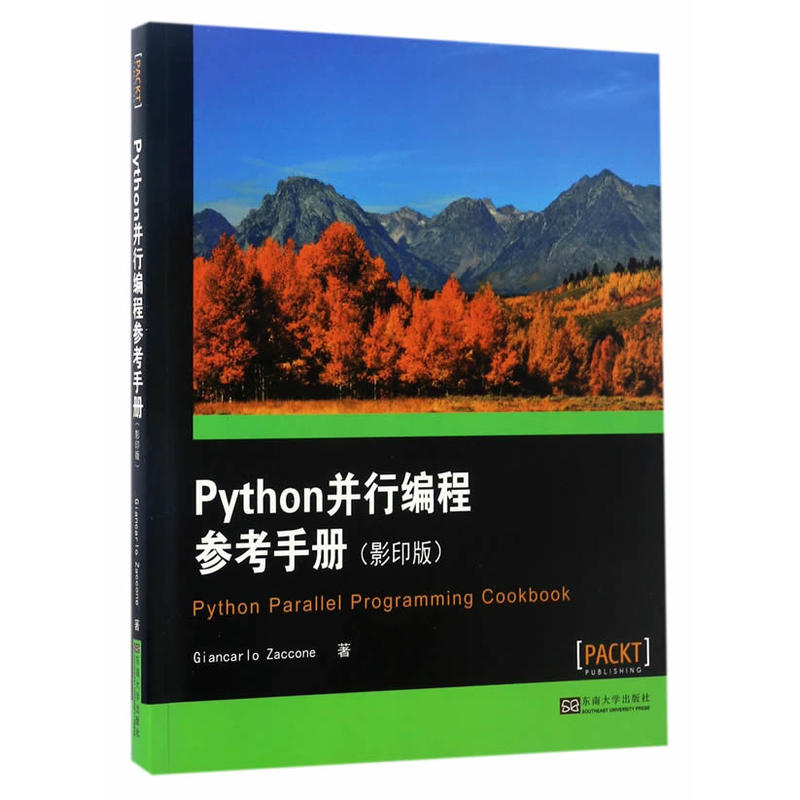
Python并行编程参考手册-(影印版)

温馨提示:5折以下图书主要为出版社尾货,大部分为全新(有塑封/无塑封),个别图书品相8-9成新、切口有划线标记、光盘等附件不全详细品相说明>>
- ISBN:9787564170738
- 装帧:暂无
- 册数:暂无
- 重量:暂无
- 开本:32开
- 页数:262
- 出版时间:2017-04-01
- 条形码:9787564170738 ; 978-7-5641-7073-8
本书特色
对于开发人员而言,如今要想充分利用所有可用 的计算资源来构建出高效的软件系统,并行编程技术 是必不可少的技能。从多核到GPU系统,再到分布式 架构,计算量繁重的程序都离不开编程工具和软件库 。
吉安卡洛·扎克尼*的《Python并行编程参考手 册》首先简要介绍了并行编程,然后讲述了Python的 基础知识,接着探究了基于线程的并行模型、采用同 步线程的Python线程模块以及锁、互斥量、信号量队 列、GIL和线程池的用法。
内容简介
对于开发人员而言,如今要想充分利用所有可用的计算资源来构建出高效的软件系统,并行编程技术是必不可少的技能。从多核到GPU系统,再到分布式架构,计算量繁重的程序都离不开编程工具和软件库。本书首先简要介绍了并行编程,然后讲述了Python的基础知识。随后探究了基于线程的并行模型、采用同步线程的Python线程模块以及锁、互斥量、信号量队列、GIL和线程池的用法。
目录
作者简介
Giancarlo Zaccone has more than 10 years of experience in managing research projects,both in scientific and industrial domains. He worked as a researcher at the National Research Council (CNR), where he was involved in a few parallel numerical computing and scientific visualization projects. He currently works as a software engineer at a consulting company, developing and maintaining software systems for space and defense applications. Giancarlo holds a master's degree in physics from the University of Naples Federico Ⅱ and has completed a second-level postgraduate master's program in scientific computing from the Sapienza University of Rome.
-

机器学习
¥59.4¥108.0 -

AI绘画+AI摄影+AI短视频从入门到精通
¥55.9¥79.8 -

企业AI之旅
¥43.5¥79.0 -

ANSYS WORKBENCH中文版超级学习手册
¥69.9¥99.8 -

乡村振兴新技术:新时代农村短视频编辑技术基础入门
¥12.2¥32.0 -

C Primer Plus 第6版 中文版
¥59.4¥108.0 -

基于知识蒸馏的图像去雾技术
¥61.6¥88.0 -

基于深度学习的人体行为识别算法研究
¥34.1¥62.0 -

粒子群算法在优化选取问题中的应用研究
¥37.4¥68.0 -

智能优化算法MATLAB仿真实例
¥65.7¥90.0 -

Web前端开发基础
¥36.5¥57.0 -

Photoshop图像处理
¥25.5¥49.0 -

网络工程师考试大纲(全国计算机技术与软件专业技术资格(水平)考试用书)
¥12.8¥15.0 -

网络工程师教程(第6版)(全国计算机技术与软件专业技术资格(水平)考试用书)
¥62.3¥89.0 -

SNS信息传播分析
¥48.3¥69.0 -

R语言医学数据分析实践
¥72.3¥99.0 -

HARMONYOS NEXT启程:零基础构建纯血鸿蒙应用
¥81.0¥108.0 -

剪映 从入门到精通
¥25.7¥59.8 -

游戏造梦师----游戏场景开发与设计
¥72.5¥98.0 -

SAR图像处理与检测
¥38.3¥49.8








